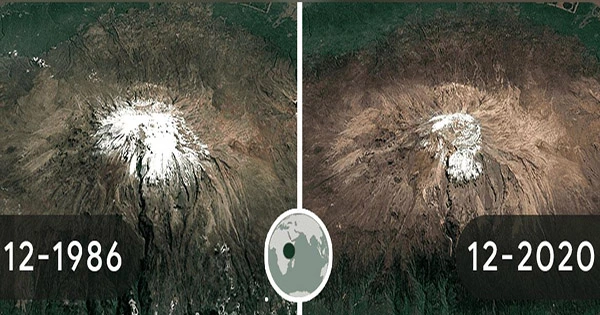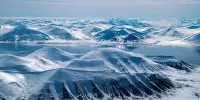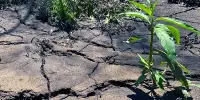Earth Day has been celebrated on April 22nd since 1970 all around the world. Over a billion people are taking part in activities throughout the world that showcase our planet’s beauty and fragility. Google has opted to commemorate the yearly occurrence with a doodle, but it’s far from whimsical or cheerful. The doodle is a time machine that transports us back in time as the effects of the climate problem become apparent. Deforestation, coral bleaching, and glaciers melting are all examples of global warming. The firm has designed a series of brief but powerful graphics depicting human impact on the environment.
For this doodle, four graphics were developed. The first focuses on the retreat of Mount Kilimanjaro’s ice. Photographs shot yearly since 1986 depict Africa’s tallest mountain, which rises like Olympus over the Serengeti (kind of). Its glacier is gradually shrinking in size. In fact, practically every glacier on the planet is losing mass. This decline is also quickening.
The second is the retreat of Greenland’s glaciers. The snowy terrain of the Arctic island has deteriorated with time, and this picture visualization concentrating on the location of Sermersooq (which translates to “place of many ice”) between the years 2000 and 2020 emphasizes the point. Greenland’s ice loss has reached a point of no return. The third animation does not require a large amount of time to convey its message. The photos (closing up in the coral) depict the changes before and after the 2016 coral bleaching event on the Great Barrier Reef. That year, it is predicted that 67 percent of coral sections in the north of the reef died.
The fourth and final doodle depicts the Harz Forest and how climate change has facilitated the destruction of the forest by bark insects. The parasite also poses a threat to Europe’s oldest forest. Today is the ideal day to take action against the climate disaster.
The Biaowieza Forest looks like something out of a Grimm fairy tale. Huge firs, oaks, and ash trees loom over you, woodpeckers and other birds sing all around you, and the guides who work there are well familiar with the history and names of many of the trees. It is a magnificent site for everyone, and experiencing it as a forest ecologist was a dream come true. However, current proposals for large-scale logging may jeopardize the traits that make it so special.
Biaowieza is the final remnant of the enormous primeval forest that once covered most of Europe, straddling the Polish-Belarus border. It is a biodiversity hotspot, with almost 20,000 plant and animal species, including wolves, lynx, and Europe’s only known population of bison. Rare birds, such as various woodpecker species, offer a glimpse of the avian life that once flourished in European woodlands before humans colonized the continent.
















